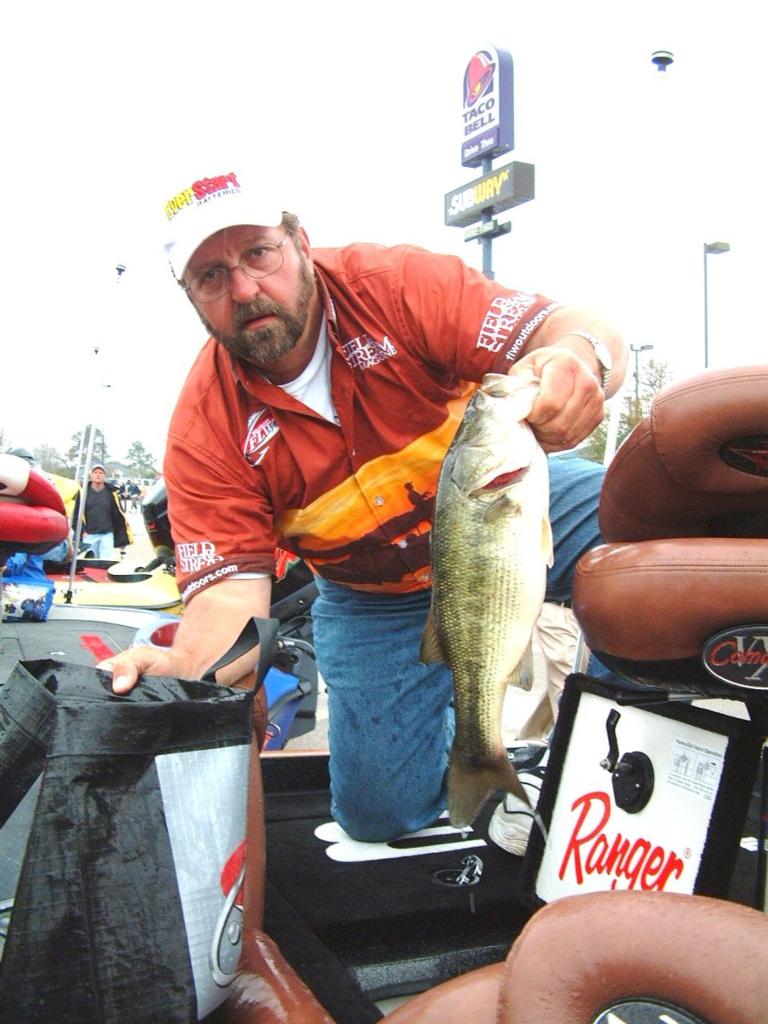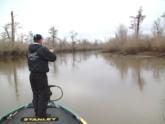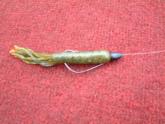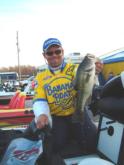Avoiding fishing pressure was key at Atchafalaya

The Wal-Mart FLW Tour event held on the Atchafalaya Basin last week made a strong case for the impact that fishing pressure has on a fishery. Despite the Basin’s immense size, fishing pressure was still a major factor.
Weeks before the FLW Tour reached the Atchafalaya Basin, a handful of anglers pre-practiced the vast waterway. Those anglers were astounded by the quality of fishing they discovered on the Basin.
“The place is unreal,” said Fuji pro Randy Blaukat at the beginning of February. “I was only there a couple of days and I caught a bunch of fish. I could have had 18 to 20 pounds on a couple of the practice days. I loved it.”
Kellogg pro Clark Wendlandt had a similar reaction to his pre-practice. “There are so many fish there, it’s ridiculous,” he said. “They bite anything you throw at them. It’s truly awesome. I can’t wait to go back for the tournament.”
Yamaha pro Takahiro Omori had one thing to say about the Atchafalaya Basin: “Oh, it’s GREAT!“
There is little doubt that the conditions contributed greatly to the basin’s productivity during the month of February. The water levels, some 3 to 5 feet lower than normal, had all of the basin’s bass pulled out of the swampy bayous into the man-made canals. The shallow stumps, grass and laydowns that line the canals are custom-made habitat for bass.
 “If I could design my own pond, this is what it would look like,” said Stanley pro David Walker about the Basin’s miles of fantastic shallow water cover. “This place is awesome.”
“If I could design my own pond, this is what it would look like,” said Stanley pro David Walker about the Basin’s miles of fantastic shallow water cover. “This place is awesome.”
For a while it sounded like a bass-fishing fairy tale. But then 175 of the nation’s best bassing machines showed up and went to work on the vulnerable bass; it didn’t take long for those bass to wise up.
After the first day of the tournament, those that were most excited about Atchafalaya Basin’s potential were a little surprised. Blaukat caught two keepers; Omori caught one keeper; and Wendlandt had four.
So what happened? An endless waterway full of bass all trapped in shallow canals, and the first day of the tournament yields only 43 five-bass limits on the pro side and not a single limit on the co-angler side?
Is it possible that fishing pressure was a factor even on such a vast waterway? Many pros believe that was exactly the case.
“I really underestimated the role fishing pressure would play in this event,” Blaukat said after day one. “Yes, this place is huge, but these canals are shallow and delicate. All it takes is one boat to run down a canal and it washes the bank out. One boat fishing ahead of you can have a severe impact. I think fishing pressure plays more of a role here than what most people realize.”
 Blaukat adjusted his fishing on day two by reducing the size of his jig and going to lighter line. On day two he brought in five bass weighing 12 pounds, 4 ounces from the same exact water that only yielded two keepers the day before.
Blaukat adjusted his fishing on day two by reducing the size of his jig and going to lighter line. On day two he brought in five bass weighing 12 pounds, 4 ounces from the same exact water that only yielded two keepers the day before.
Further evidence that fishing pressure affected anglers in the basin can be found in the patterns of the top five anglers. Anglers finishing in the top five did one of two things: They either had an entire area to themselves, or they out-finessed the fishing pressure.
In the first category is Atchafalaya FLW winner Paul Elias. Elias did not fish the same place all four days. As part of his strategy, he was saving a small, nearly inaccessible canal for the final two days in case he made the top 10.
The canal was about five miles long and almost dry. Toward the back end was the canal’s deepest water – a small area that held about 2 to 3 feet of water. Bass that resided in the canal were all congregated in that small area trapped by the shallow water.
In order to get into the area, Elias had to run – trimmed up and on pad – in water that was less than a foot deep for five miles. “If the boat had set down for any reason going in or coming out, it would have been stuck there for a long time,” Elias commented.
Elias says he never even wet a line in the canal before going there on day three. Not only was the area full of bass, but also the fish there were not exposed to angler pressure. No one else had fished that far back in the shallow canal.
Elias seined the small area with spinner baits and buzzbaits the last two days to catch his winning weight.
Two other top finishers, third-place pro Jimmy Millsaps of Canton, Ga., and fifth-place pro Andre Moore of Scottsdale, Ariz., also found fishing areas free of pressure.
Millsaps located a canal that connected two shallow lakes together. He theorized that bass wanting to move into the lakes were harboring in the deeper canal until the water came back up. But the main attraction for Millsaps was the lack of fishing pressure.
“I never saw another boat in that canal for the entire tournament,” Millsaps said.
Moore located a canal about an hour from the launch site that was chock full of bass. The only other competitors in the canal were his roommate (by Moore’s invitation) and one other angler on the second day. Other than that, Moore had the place to himself for three of the four days.
 Runner-up Bill Chapman of Salt Rock, W.Va., and fourth-place finisher Dave Lefebre took a different approach to combating fishing pressure: They lightened up and slowed down.
Runner-up Bill Chapman of Salt Rock, W.Va., and fourth-place finisher Dave Lefebre took a different approach to combating fishing pressure: They lightened up and slowed down.
While their competitors pitched heavy jigs and tubes to shallow cover on 25-pound-test line, Chapman and Lefebre both found success with almost the same presentation: a green pumpkin tube rigged with an 1/8-ounce weight tied to light line.
Chapman’s successful tube combination was a 3-1/2-inch green pumpkin Cabin Creek tube with an 1/8-ounce weight tied to 10-pound-test Izor line. Lefebre used a 4-inch ISG green pumpkin tube with an 1/8-ounce tungsten weight tied to 12-pound-test P-line.
Both anglers had a fair share of traffic in their areas. Lefebre had eight boats around him in the Zig Zag Canal area. Chapman also reported having top-name pros around him in the Bayou Long area.
Chapman and Lefebre both discovered an effective pattern: to work the lighter baits slowly on longer pitches and casts, keeping the boat well off the bank.
“I was getting a lot of bites on the heavier line, but they just were not eating it,” Lefebre said. “I would set the hook and get nothing. So on the first day of the tournament, I dropped down to a lighter weight and lighter line, and I started sticking the bass. That told the story – lighter was a better choice.”